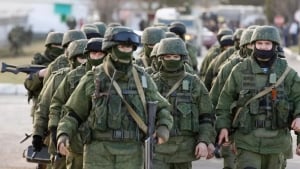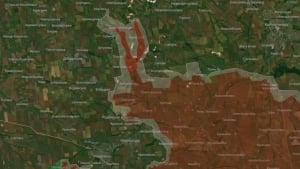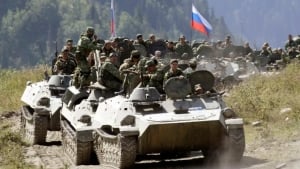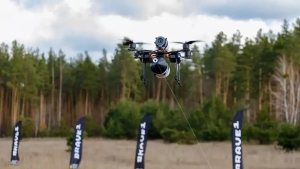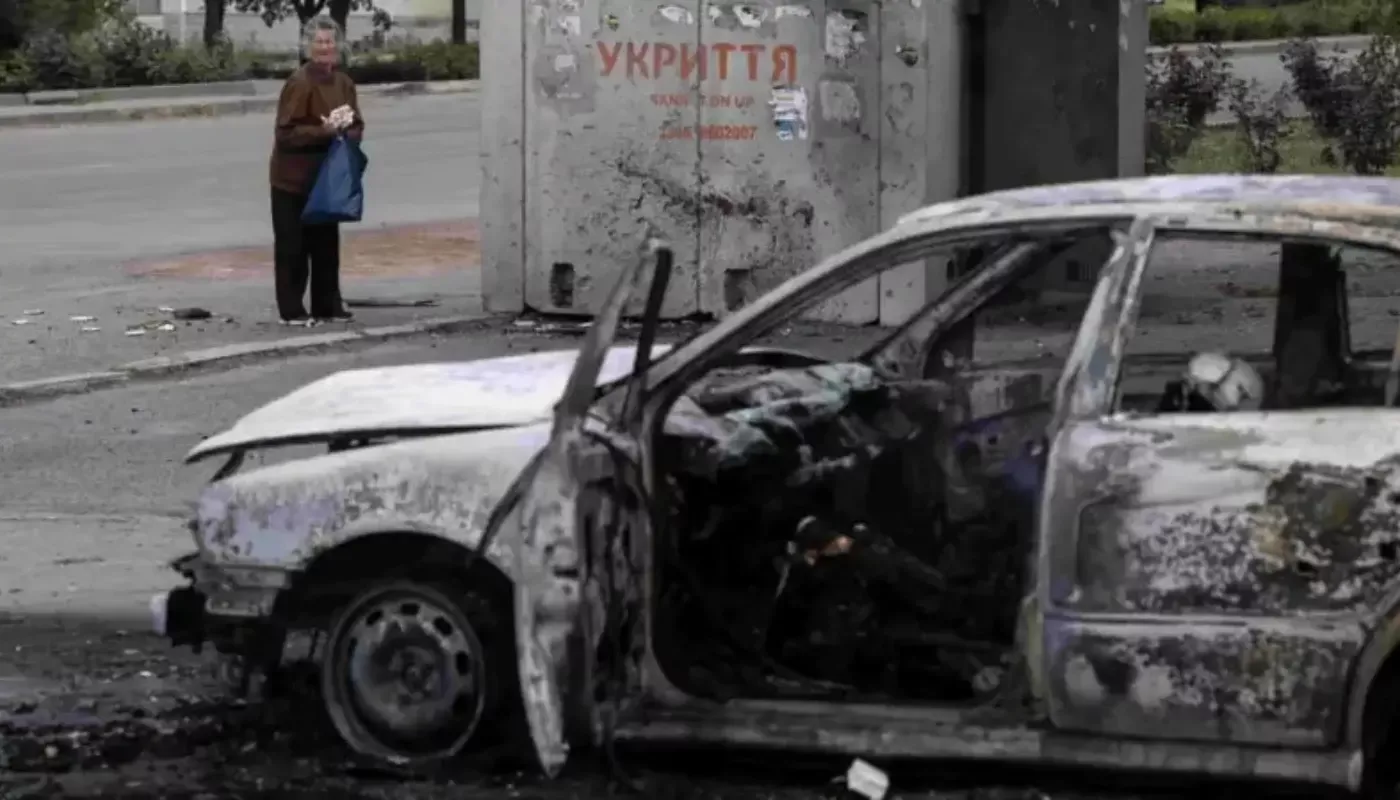
In recent weeks, the situation around the city of Konstantinovka, located in the northern part of the Donetsk region, has become quite complicated. The Russian army has begun to implement its plan to encircle the city by breaking through Ukrainian defenses to the west of it.
Konstantinovka is part of a large agglomeration that includes the cities of Slovyansk, Kramatorsk, and Drujkovka. This city, which serves as the industrial and administrative center of the part of Donbass still under Ukrainian control, was targeted by the Russians for capture in the early months of the invasion. At that time, the Russians attempted to enter the area from the north through Liman and Izyum, but the successful counteroffensive by the Ukrainians in the fall of 2022 thwarted that plan.
Now, the Russians are gradually entering the agglomeration from the south, west, and east through battles. Daily reports from the Ukrainian Armed Forces General Staff indicate that the most clashes in recent weeks are occurring right here – in the directions of Pokrovsk, Toretsk, and Kramatorsk.
By the end of May, the RF army approached its last major obstacle on the way – the Kleban-Bik reservoir. Just a few kilometers beyond that, the outskirts of Konstantinovka begin, and the Kremlin's main goal in the summer military campaign may be to capture this city.
How did this advance begin and how has it developed? The BBC Ukrainian service analyzed the situation that has arisen around this city.
Gap in defense and three-sided attack
Konstantinovka plays an important role as a railway and road hub, serving as a logistical center and fortified area for the Ukrainian armed forces.
From the early weeks of the large-scale war, it has been subjected to several strikes from Russian aviation and long-range missiles. As the front line approached in the spring, the outskirts of the city became an area reachable by Russian FPV drones and artillery.
At the beginning of May, the press service of the 93rd separate mechanized brigade of the Ukrainian armed forces, known as "Kholodniy Yar," reported that Russian optical fiber drones were already attacking military and civilian transport in Konstantinovka itself.
“Enemy operators are resorting to cunning tactics: they set up drones on the roads, waiting for vehicles or cars to pass. Then they lift the drone and strike or destroy the transport,” the brigade details.

Officials in Konstantinovka say that nearly a third of the city has been destroyed. Photo: EPA
Officials report that 20-30% of the houses in Konstantinovka have already been destroyed, but there are still up to 9,000 civilians remaining in the city (before the war, about 70,000 people lived there). According to local military administration head Sergey Gorbunov, all children have been evacuated.
In 2023-2024, Konstantinovka was considered a relatively frontline city, with the front line located 30-40 km away. This allowed for the placement of weapons and logistics for Ukrainian groups fighting in the directions of Bakhmut and Toretsk.
However, in the spring of last year, Russian troops began an offensive from the direction of Bakhmut towards Chasiv Yar – the main stronghold of defense on the eastern flank of Konstantinovka and the last "stronghold." Although the Russians could not quickly capture this city, they are gradually breaking through Ukrainian defenses and have already approached the western outskirts of Chasiv Yar. It is approximately 10 kilometers from there to the buildings in Konstantinovka.
In June of last year, the RF army transitioned to an offensive on the southern flank, attacking Toretsk. Despite statements from the Russian Ministry of Defense that the city is fully under control, Ukrainian armed forces still maintain resistance strongholds around Toretsk. This significantly slows down the movements of Russian troops trying to find gaps on the flanks near the villages of Shcherbinovka and Diliyevka.
It is about 12-13 kilometers from there to Konstantinovka.
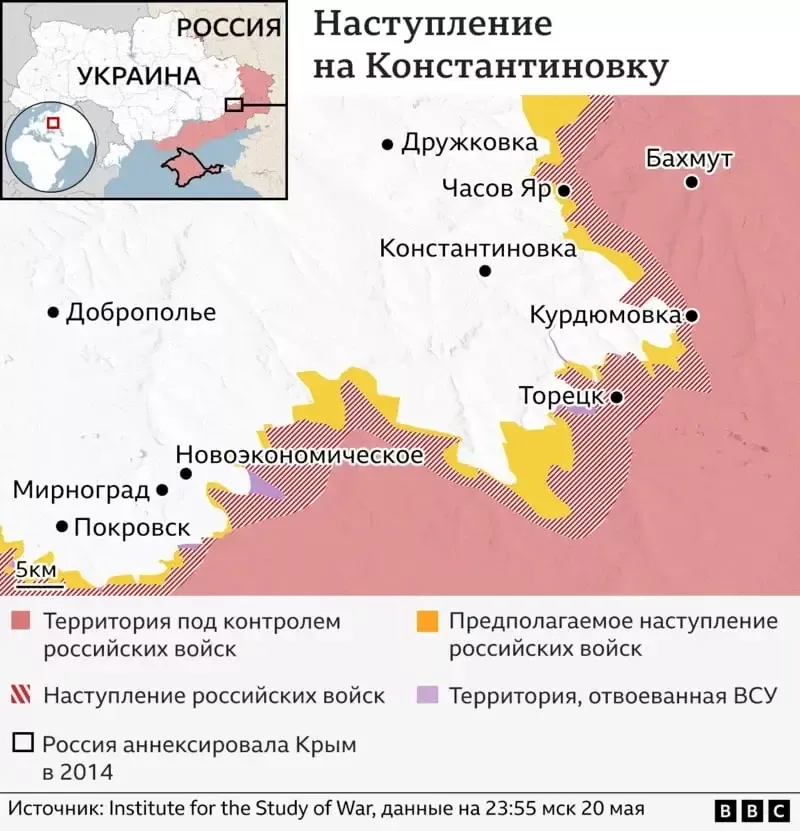
In the spring, the Russians succeeded in breaking through Ukrainian defenses. This occurred near the southwestern part of Konstantinovka, close to the road leading to Pokrovsk. For a long time, the Russians could not establish a strong position on this road, as Ukrainians successfully launched counteroffensives, pushing the enemy back from their positions.
However, at the beginning of May, the Russian army cut off the road and managed to capture a number of villages both to the south and north of it. This includes settlements such as Tarasovka, Malinovka, Novaya Poltavka, Aleksandropol, and Novoolenevka. Additionally, Russian armed forces are making strong efforts to break through to the north and completely cut off the logistics of Konstantinovka in the western direction.
The situation is complicated by the fact that Russian troops are simultaneously attacking in the opposite direction – towards the Mirnograd-Pokrovsk agglomeration. This does not allow the Ukrainian armed forces' General Staff to concentrate additional forces on one front and spread them across several directions.
Indeed, the Ukrainian command considers the Kremlin's primary task to be the capture of Konstantinovka.
“The enemy is primarily interested in threatening the city of Konstantinovka. For this purpose, they are trying to break through to the north of the Pokrovsk-Konstantinovka route and simultaneously attempt to flank from the direction of Chasiv Yar. Our main efforts are focused on preventing them from doing so,” said Viktor Tregubov, a spokesperson for the operational-strategic group "Khortitsa," during a Ukrainian telethon.
What will happen to Konstantinovka next?
Russian military bloggers have already referred to the situation near Konstantinovka as a "strategic victory for the Russian army." At least one of the well-known Russian military analysts, Yuriy Podolyak (who has 3.1 million subscribers on Telegram), believes this.
“There is now no doubt that in this area we have achieved, for the first time during this war, a classic deep breakthrough of enemy defenses. Yes, the pace is not like in the Great Patriotic War, but at that time we did not have drones that limited any movement of both ours and the enemy’s and did not allow us to move faster,” he wrote on May 21.
According to him, the Russian army has already approached the borders of the villages of Popov Yar – Poltavka – Rusin Yar – Stepanovka. Breaking through this defense line will allow for closer proximity to the main support road Dobropole – Kramatorsk and will enable more active strikes along it, particularly with FPV drones.
This, in turn, could paralyze the logistics of the Ukrainian armed forces in this direction.
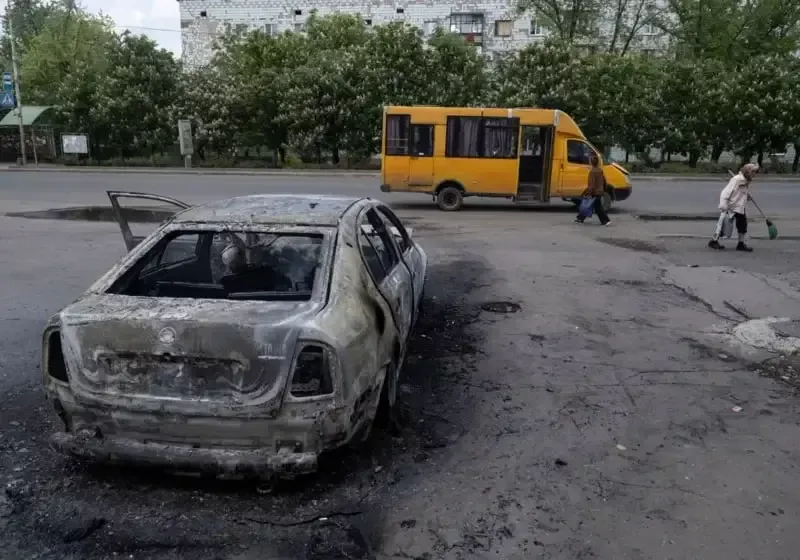
Consequences of the shelling of Konstantinovka, May 16. Photo: EPA
The military analyst from the "Information Resistance" group in Ukraine, retired Colonel Konstantin Mashoves, referred to the Russian army's successes in this section of the front as "tactical deep penetration." He noted that the advance towards Konstantinovka is being carried out by two combined arms armies of the RF army: the 8th army and the 51st army.
The 8th army units have carried out the breakthrough on the left flank, which was launched in March. They have managed to penetrate nearly 9 km into the defense lines of the Ukrainian armed forces and continue to expand this "blade."
“The tactical success is clearly visible. The large number of infantry soldiers, as well as the ability to constantly replenish the front units and divisions suffering significant losses with personnel, allows the enemy to maintain a very high level of intensity in their offensive/storm actions for now,” Mashoves notes.
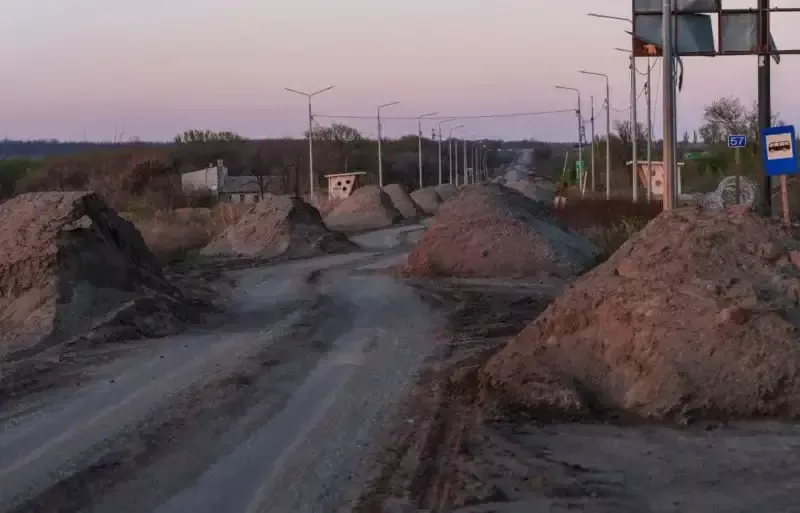
Defense structures at the entrance to Konstantinovka. Photo: EPA
A source in the command structure of the Ukrainian armed forces admitted that the situation in this direction has rapidly deteriorated in recent weeks.
In his opinion, the near-term task of Russian troops is to create a semi-encirclement of Konstantinovka and bring the logistics of the defense forces under fire control.
If they succeed, Ukrainian units will have to retreat from the "pocket" near Toretsk (a platform surrounded by enemy-occupied areas) to the north – to the defense line that runs along the Bichok and Kazenniy Tores rivers and the Kleban-Bik reservoir. If there is no possibility to hold this position, the likelihood of Russia starting an assault on the Konstantinovka-Kramatorsk agglomeration in the summer will increase.
The question remains open as to whether the parties have sufficient reserves prepared for this battle.



